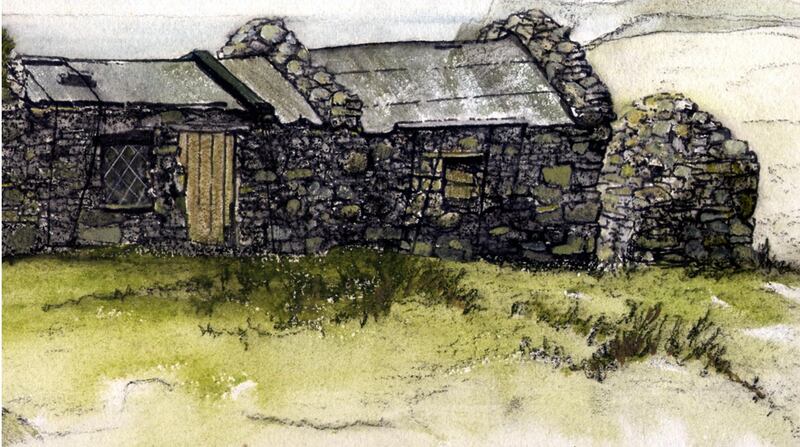SUCH A SHAME that the one taoiseach to count love of nature among the finer things in life should have been such a villain in pursuing all the others. No one matched Charles Haughey in looking out for Ireland’s nature and history. The idea of the Heritage Council, the state’s sanctuary for whales and dolphins, the rescue of Coolattin Woods, in Co Wicklow, the Discovery archaeology programme, the Céide Fields go-ahead: all were among things to his credit.
In Government Buildings his special adviser on environmental affairs, Dr David Cabot, beavered away at Green 2000, a committee report full of nature-friendly ideas. Then this week it was reported that his family has offered his yacht Celtic Mist, which had been for sale for €175,000, to the Irish Whale and Dolphin Group, for its research work.
Much of Haughey’s personal grá for nature was played out on the heights of Inishvickillane, in the Blaskets off Co Kerry. He finally bought the island in the early 1970s, but the idea had taken root years earlier, before the turmoil of the arms trial and his fight back to leadership.

A voluminous archive of papers and photographs of Haughey's relationship with the island, donated by his family, is now on digitised display at the Blascaod Centre, in Dún Chaoin, west of Dingle. It holds two copies of "The Wild Island", a series from The Irish Times in September 1965. This was my diary as a castaway, camped alone on Inishvickillane for three memorable weeks.
I was young – 32 – and it shows, rather, in some over-the-top prose and blushworthy confidences. (“The sun set red tonight and I watched it all the way down, smoking a last pipe and listening to the Beethoven violin concerto,” or, “I crawled from the sleeping bag as from a chrysalis and stretched in the sun. Suddenly properly hungry for the first time in days, I hacked thick slices off the slab of bacon and played Vivaldi’s “Le Printemps” while they sizzled . . .” I had eight hours of cassettes and 20 hours of batteries, so there’s rather a lot of this.)
The island, however, had splendid sounds of its own, and a wildness even sharper since the last of the Ó Dálaigh family were taken off to the mainland, in the 1950s. Their sons still came out by currach from Dún Chaoin on a calm summer’s day to shear a little flock of sheep, but without them Inishvickillane was often as described by Robin Flower, who went there once on a rabbit-catching expedition.
He felt it “inhabited with the sense of loneliness: it is as though it were at the last end of things, dwelling in a silence which the ceaseless murmur of the sea around its base and the whining gulls about its summit rather accentuate than disturb”. But the ocean could do a lot more than murmur.
I pitched my tent first near the island’s one surviving house (in my painting, pictured above), its tarred roof drooping and bound down with cables, a sundial outside the door. A summer storm on the sixth day drove me to stone walls for shelter. At its height the rain penetrated the tent as a fine mist, and stays began snapping around me. Retrieving my gear from its collapse was, I wrote, “like swimming in a wet bed”. Haughey, too, was to move the site of his holiday home (a modest enough cottage, if one discounts the helicoptered labour) into the lee of the island’s ridge.
That also avoided disturbing the thousands of storm petrels, whose summer nesting in burrows and stone walls is the great natural treasure of the island. Their midnight return from the sea to feed their chicks found my tent in their way, so that the sudden, chirruping blizzard of wings became something out of Hitchcock, the invisible birds scrabbling and sliding down the fabric over my head.
Haughey’s own wildlife experiments sought to improve on Eden – or at least to furnish it more fully. His attempt to restore sea eagles to the cliffs didn’t work: just one pair, from Germany, was nowhere near enough, and the birds were ferociously mobbed by the islands’ big gulls and ravens. Aillil, the male, was found dead on a beach in Waterville; Maeve came and went for a few years after but finally disappeared.
The nine red deer flown from Killarney were a better idea – indeed, a very good one, as the island’s herd, now at about 90, duly culled and renewed, preserve the bloodline, safe from interbreeding with the mainland’s Sika deer.
I doubt if Charlie ever stewed a rabbit on a fire of dried sheep dung or had the grey seals snatching pollack off his spinner. But, with a glass of good claret in his hand, he must have known those incredible evenings when, as I wrote, “a theatrical clarity of light lent the islands new perspectives: deep avenues of cliffs like vistas in a Piranesi, gleaming and gold-enamelled (slow bursts of spun-glass spray).”
He did invite me back, any time. But I left my wild island, and my youth, back in the mists.
